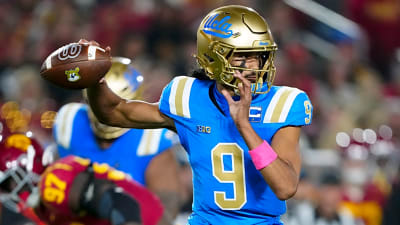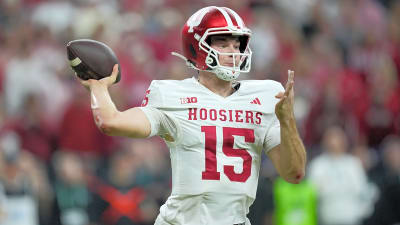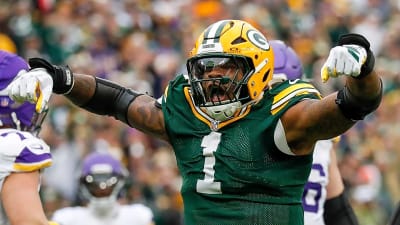
Comparable to Kawhi? Analyzing Virginia's De'Andre Hunter
Yardbarker NBA draft analyst Brett Koremenos offers in-depth assessments of the top-five prospects leading into the draft on June 20. Here's his analysis of Virginia's De'Andre Hunter, Yardbarker's No. 4 draft prospect.
All prospect reports: No. 1: Zion Williamson | No. 2: Ja Morant | No. 3 Darius Garland | No. 4 De'Andre Hunter | No. 5 Jaxson Hayes | More NBA Draft coverage
DRAFT NIGHT AGE: 21
HEIGHT: 6-8 | WEIGHT: 222 | WINGSPAN: 7-2
2018-19 RAW NUMBERS (totals per game)
GP MIN PTS REB BLK AST TO
38 32.5 15.2 5.1 0.6 2.0 1.4
His game
Despite the potential to be an early lottery pick, Hunter doesn’t have much “wow” factor. In part because of his willingness to buy into Virginia’s team-first system during the school’s championship run, Hunter will begin his professional career as the quintessential jack-of-all-trades.
As a scorer, Hunter is about as balanced as they come. He was equally adept spotting up from three (43.8 percent during the 2018-19 season) as he was delivering buckets off post seals. Hunter also demonstrated a knack for using the gravity of sharpshooting teammates like Kyle Guy as they whipped off screens to slip into open space for easy buckets. The Cavalier forward actually had more scoring opportunities off cuts than he did from post-ups, offensive rebounds or transition run-outs.
At Virginia, Hunter still had opportunities to freelance. In situations where he attacked off the bounce from the perimeter or took on a defender in a one-on-one situation, Hunter displayed a handle ready for the next level. The end product following those off-the-dribble ventures for Hunter were often jumpers. For some players, that is a fine result. Hunter, unfortunately, averaged just 0.774 points per possession on those dribble jumpers -- an underwhelming return on investment.
Thankfully, Hunter can make up for unfinished and unremarkable offensive skills on defense. The forward isn’t an athletic freak or the most agile player, but his effort and use of angles when sliding with ballhandlers is top notch. Hunter also has the size, strength and length to swap defensive assignments against players with similar size.
Hunter’s defensive fundamentals and effort will likely be his bread and butter starting out. How well he improves his movement and finds an elite offensive skill are likely where Hunter’s future will be decided.
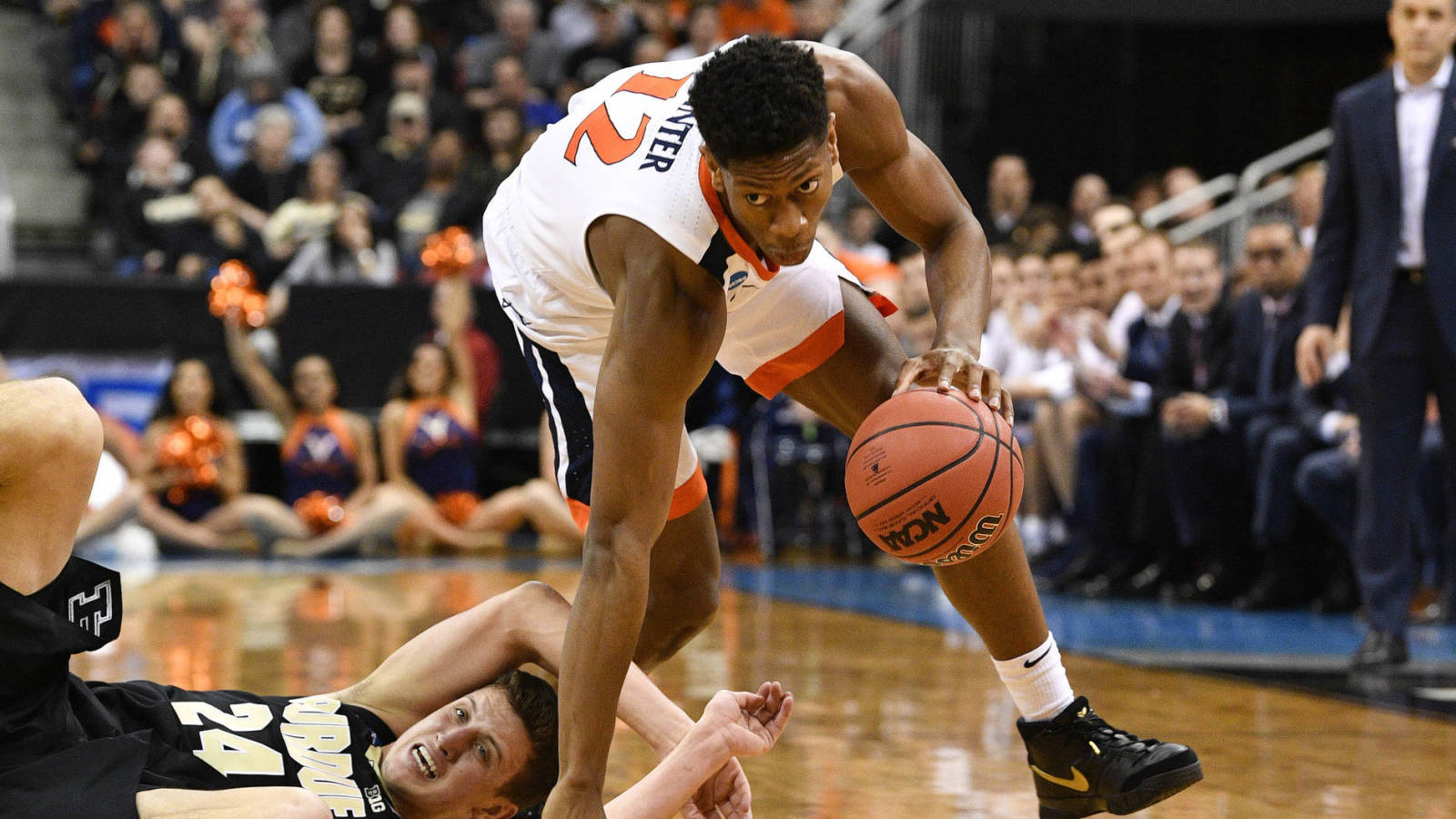
Number that matters: 6
That is the number of hand-off situations where Hunter operated as the ballhandler -- not the screener -- this past season. A few years ago, a “3-&-D” prospect like Hunter would be just fine without having to handle out of pick-and-rolls or dribble hand-offs. With the explosion of unscripted offense hitting the NBA, that is no longer the case, even with combo forwards like Hunter.
On virtually every NBA team, Hunter will be put in offensive sets that will see the flow of action occasionally put him in the driver’s seat. The fact that he spent more time as the screener rather than ballhandler in these spots at Virginia means Hunter will start his NBA career behind the curve. Game repetitions matter when it comes to developing a usable skill. That isn’t to say Hunter is doomed when it comes to being an effective operator in these situations. Instead, it’ll just be an area likely to come with growing pains as Hunter transitions to the next level.
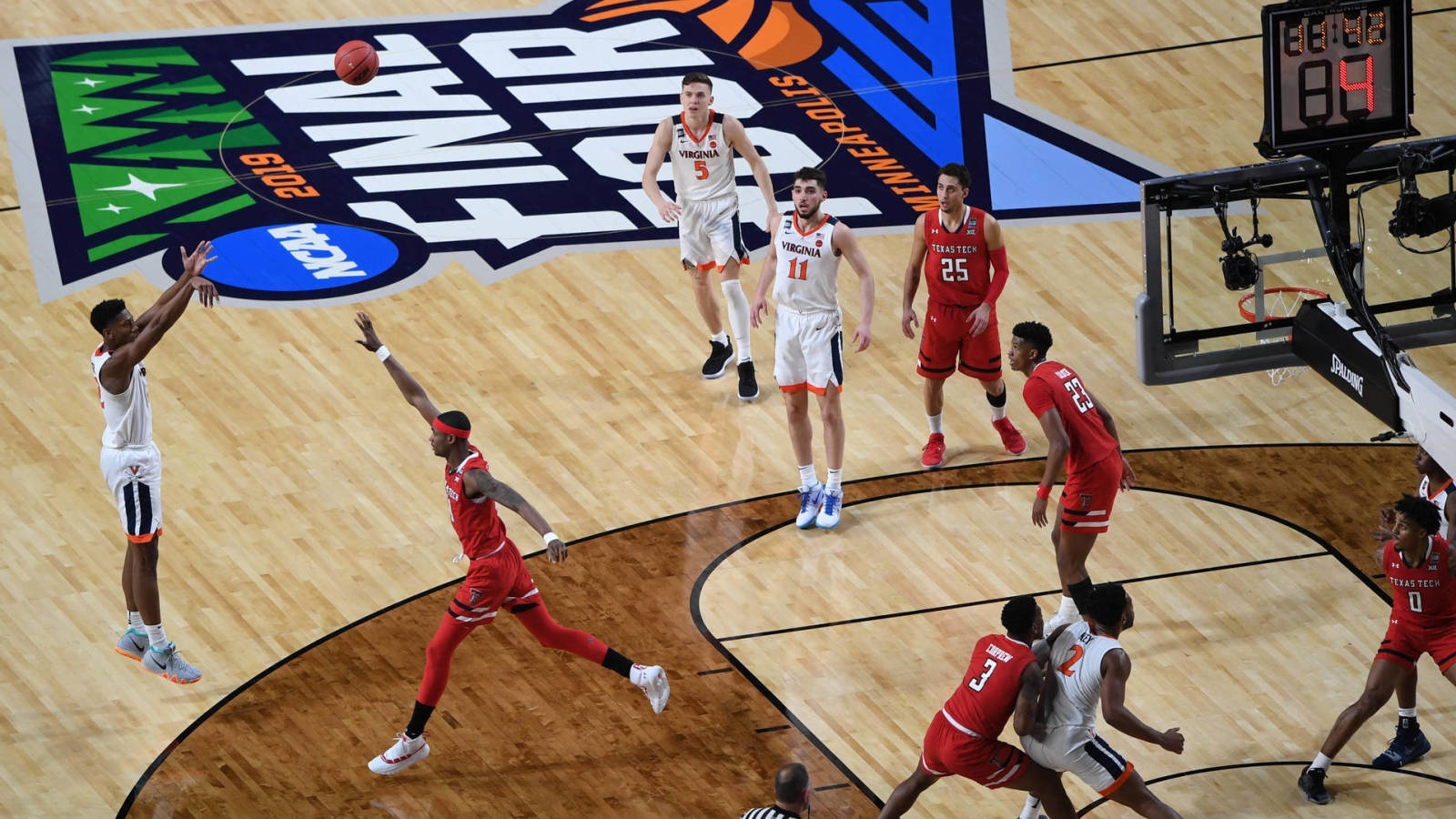
Number to ignore: 41.9
The career three-point shooting percentage Hunter posted at Virginia has most teams and fans assuming he will walk into the NBA as a threat from deep. The problem with that assumption is sample size. Hunter only attempted 160 three-point shots during his two seasons in Charlottesville -- a miniscule figure in the grand scheme of analytics.
According to research done by the savvy folks at Nylon Calculus, it takes about 750 three-point attempts before a player’s true skill level from deep can be accurately assessed. This doesn’t mean Hunter’s career percentage from beyond the arc is a fluke. It just means that the low volume of attempts doesn’t guarantee Hunter will smoothly transition to the longer NBA three-point line.
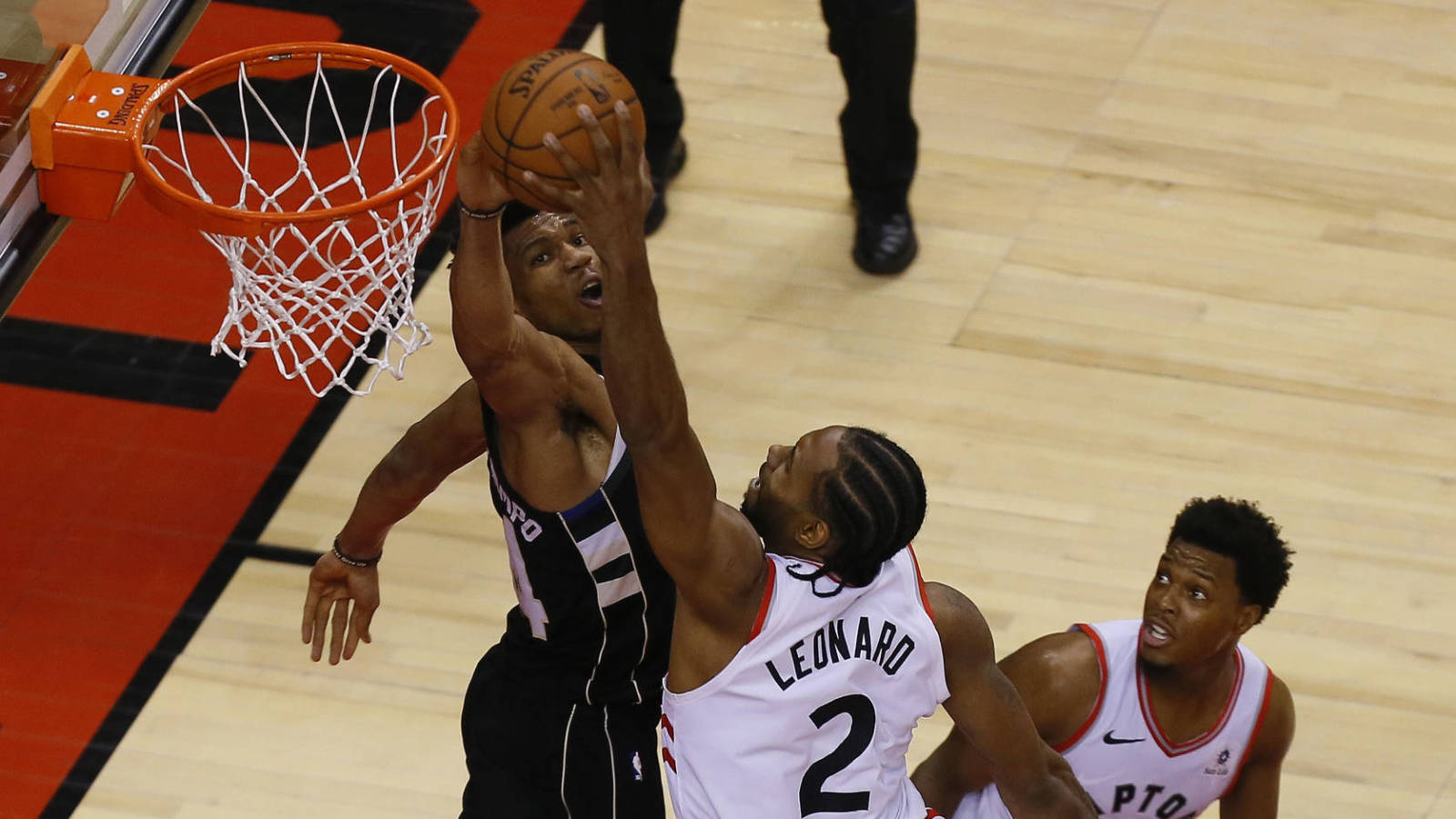
His Comps: Kawhi Leonard
It seems impossible watching him now, but over a decade ago Kawhi Leonard was a mechanical, defense-minded prospect with questions about his shooting ability. Hunter and Leonard also share similar physical tools. Leonard came in with a 7-3 wingspan for his 6-7 frame, one inch longer than Hunter has measured. Hunter posted a better vertical jump (37 inches) than Leonard did (32) during his pre-draft testing. In other words, Hunter’s opening chapters have quite a bit in common with one of the league’s most effective two-way players.
A lot of what will determine if Hunter can follow a similar track as Leonard will have nothing to do with physical attributes or skills. Leonard’s maniacal work ethic is well documented. He’s the type of player who maxed out his physical gifts by adding new skills to his game season after season.
Hunter will also likely need to have similar luck Leonard did when it comes to the franchise that selects him. Although the relationship became so frayed at the end Leonard had to be traded to the Toronto Raptors, landing in the San Antonio Spurs developmental system was a great way for an unrefined youngster to start his career. Should Hunter land in a more dysfunctional situation, there’s a chance that even a Leonard-like work ethic won’t save him.
If Hunter has a burning desire to maximize his talent and is selected by the right team (Atlanta?), the comparison to one of the NBA’s best players won't seem far-fetched.
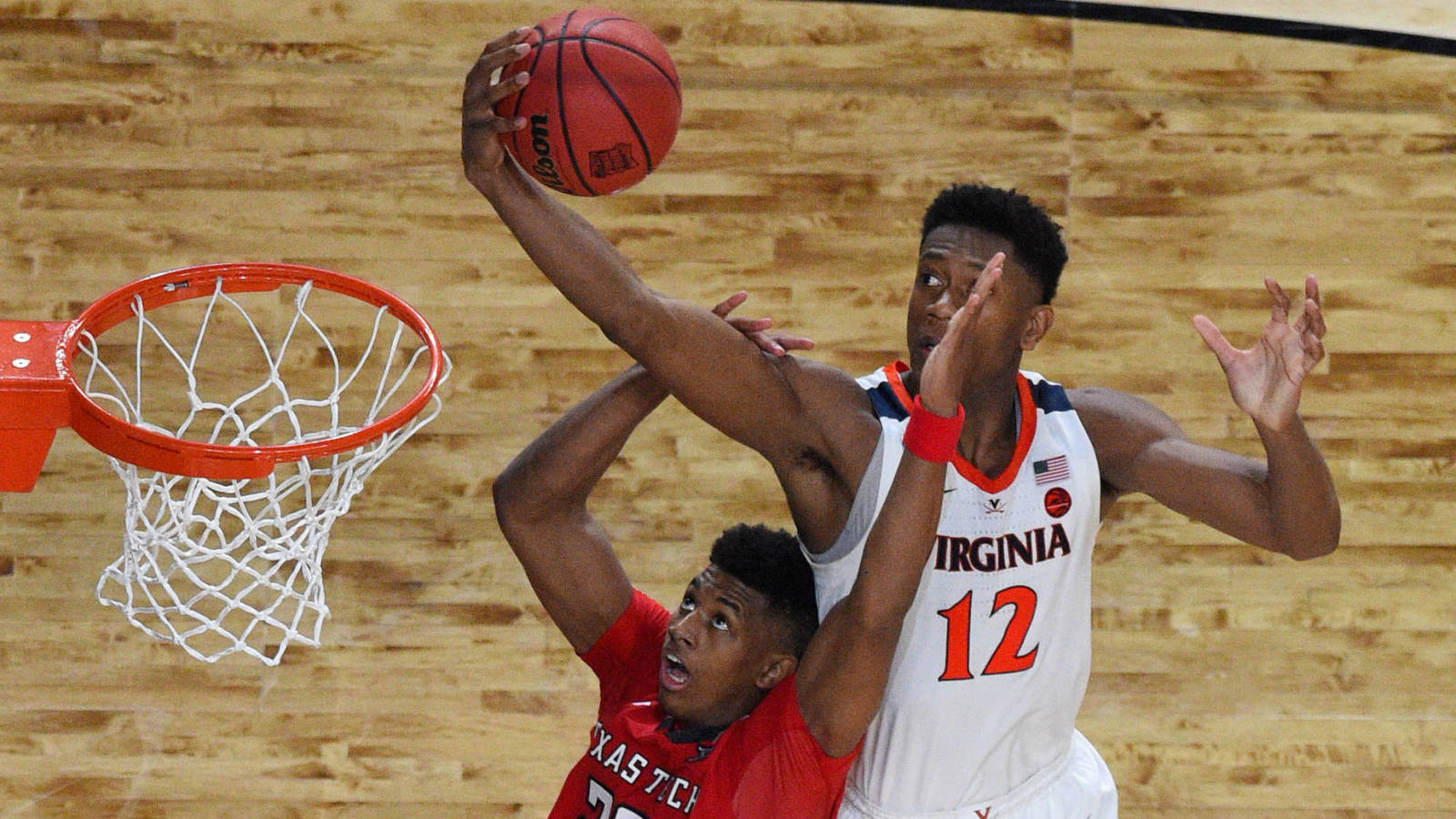
Building a skill set
In his rookie season, Hunter must dial in his outside shot. He should also add an array of finishes around the basket. Extended layups, floaters and other touch finishes are going to be a must for a player not known for routinely rising over opponents for a dunk. With his solid frame, Hunter also should use his body to bump off and create separation from longer, more athletic NBA defenders when getting to short jumpers or shots in the paint.
Hunter eventually must improve his play-making. He does not excel now at pick-and-rolls and dribble hand-offs or by attacking rotating defenses from the perimeter. If he wants to be more than a player who spots up along the arc in the NBA, Hunter must add more scoring moves.
Best-case scenario
Hunter lands in a functional organization with a good supporting cast and isn’t asked to do too much. Hunter’s stroke also immediately transitions to the NBA three, giving him a standout skill on offense. He spends summers dedicated to building his game and becomes a multi-faceted offensive threat as well as a capable defender. With that combination, a handful of All-Star appearances are likely a lock. Reaching Leonard’s current status, however, seems like a reach.
Worst-case scenario
Whether it's due to a poor franchise fit or work ethic, Hunter never develops a go-to offensive skill. His length and effort help him defensively, but Hunter’s average agility causes problems when he’s asked to guard quicker, shiftier players. Hunter’s floor is high enough that he likely will not bounce out of the league. But if enough doesn’t go right, Hunter may only see minutes toward the back-end rotations for bad teams.
More must-reads:
- NBA Draft analysis: 10 non-BCS prospects to watch
- 2019 NBA mock draft 3.0: The post-lottery first round
- The 'Youngest 40-point NBA games' quiz
Customize Your Newsletter
 +
+
Get the latest news and rumors, customized to your favorite sports and teams. Emailed daily. Always free!
